ChemInc: Revenue Recognition in Bill-and-Hold Transaction with Bond
VerifiedAdded on 2023/05/30
|5
|830
|246
Case Study
AI Summary
This case study examines ChemInc's revenue recognition practices, specifically focusing on a bill-and-hold transaction with Bond Pharmaceutical. The analysis delves into the conditions under which ChemInc can recognize revenue, considering factors such as fixed purchase commitments, buyer-initiated requests, fixed delivery schedules, and the transfer of ownership risks. The solution discusses the relevant accounting standards and provides journal entries to illustrate the proper accounting treatment for the transaction, including the initial revenue recognition and subsequent adjustments related to the bill-and-hold arrangement, also considering factors like payment expectations, past experiences, potential risks, and custodial insurance to ensure accurate revenue recognition. Desklib provides comprehensive resources for students, including access to similar case studies and solved assignments.
1 out of 5
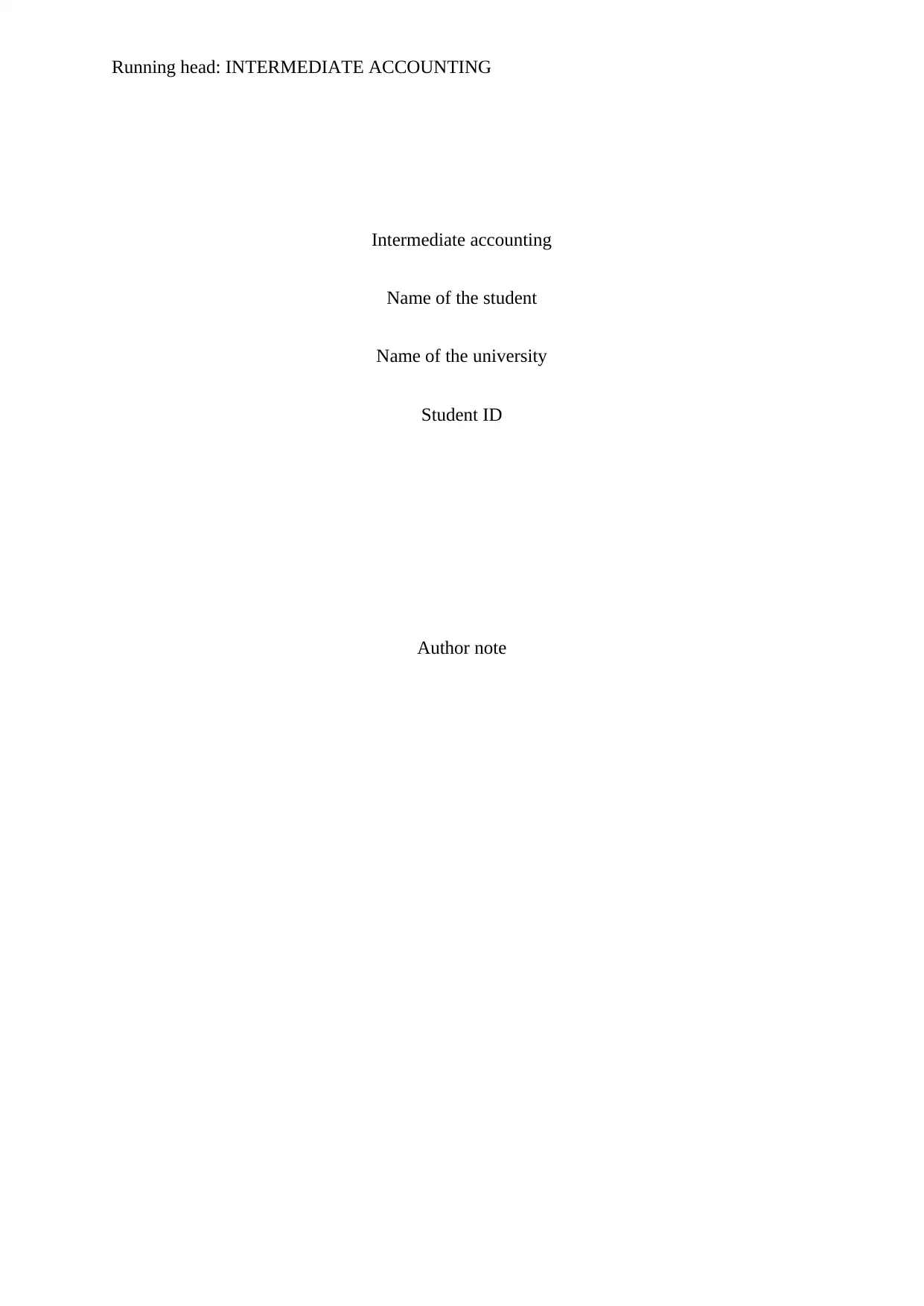
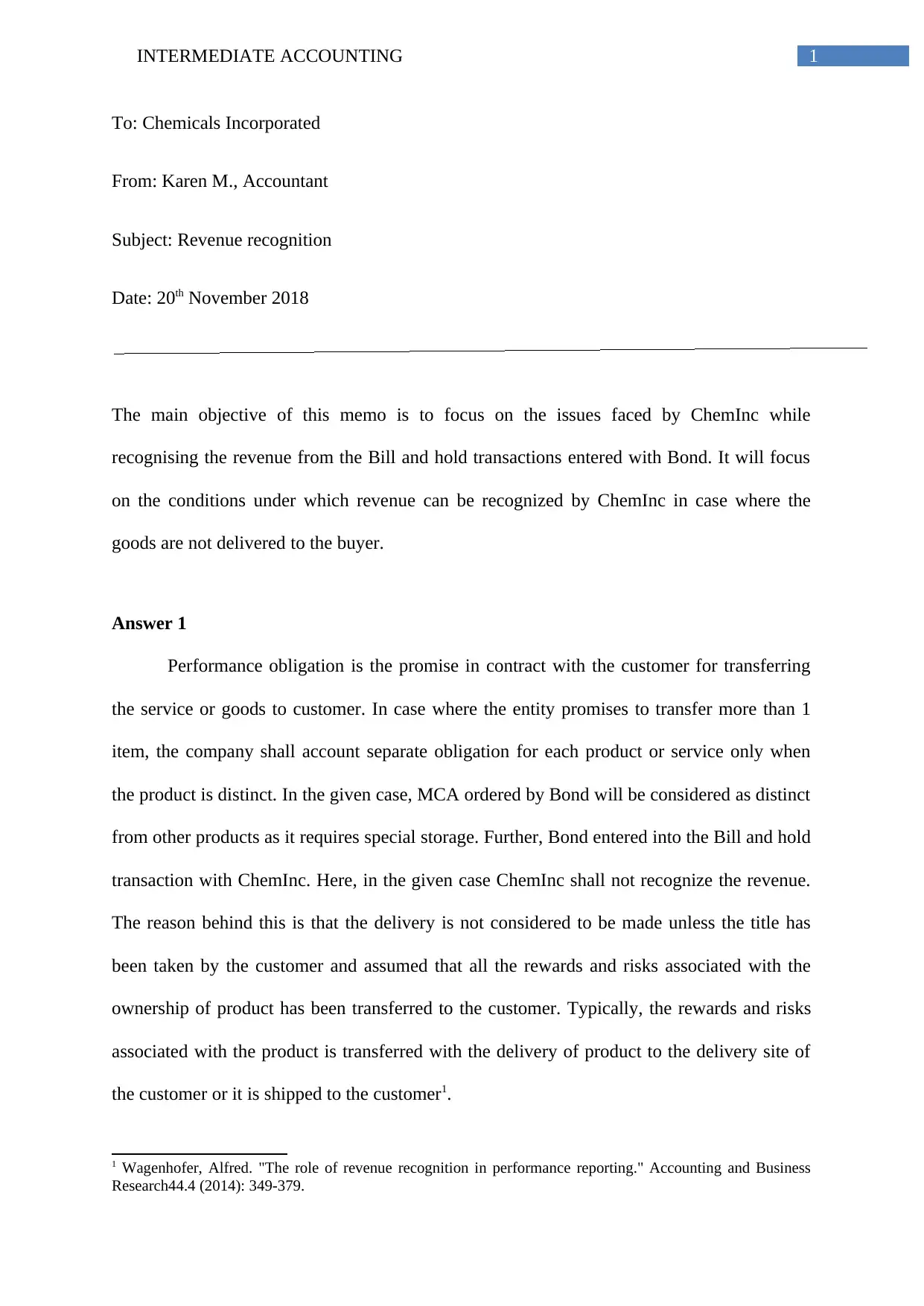
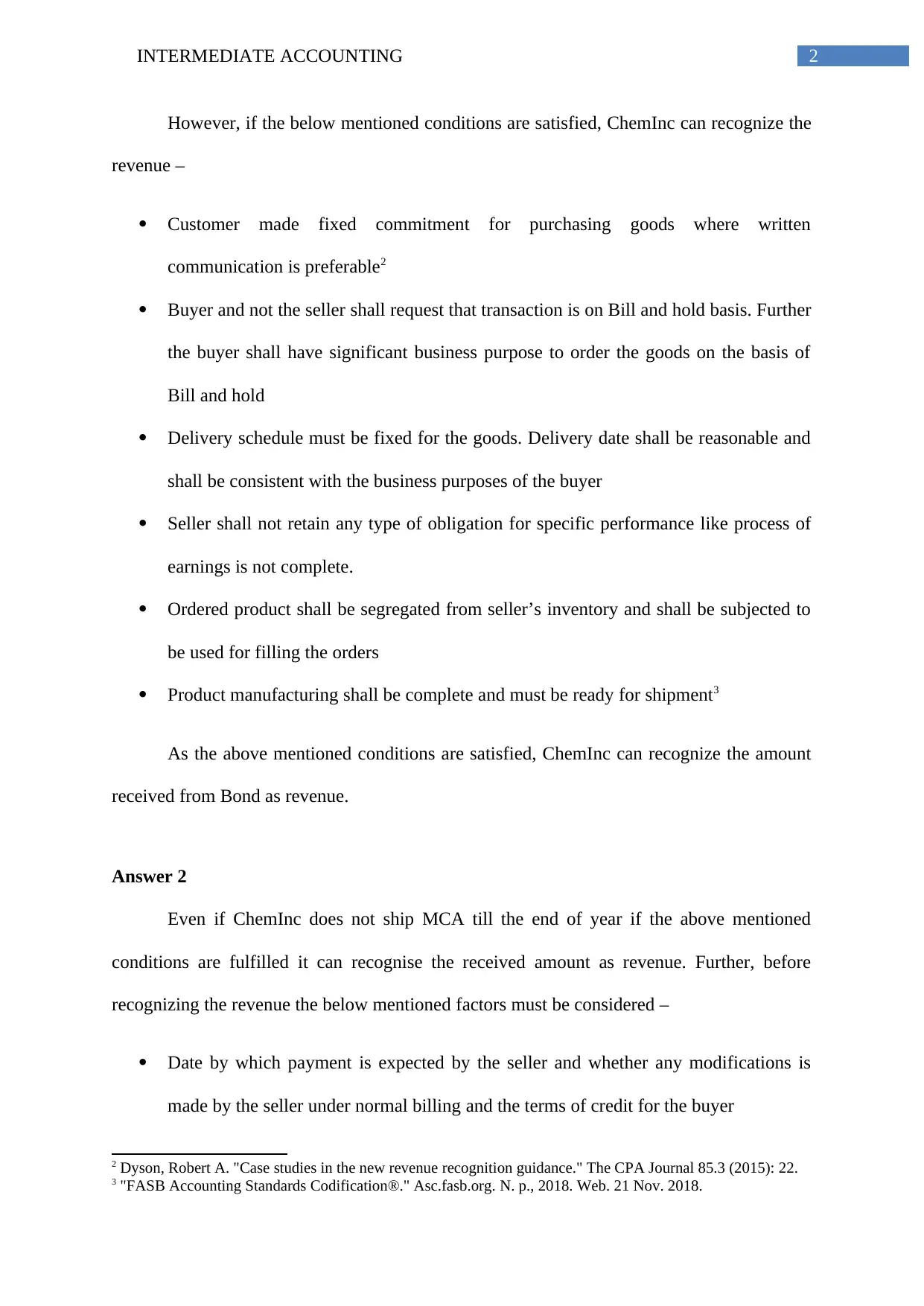

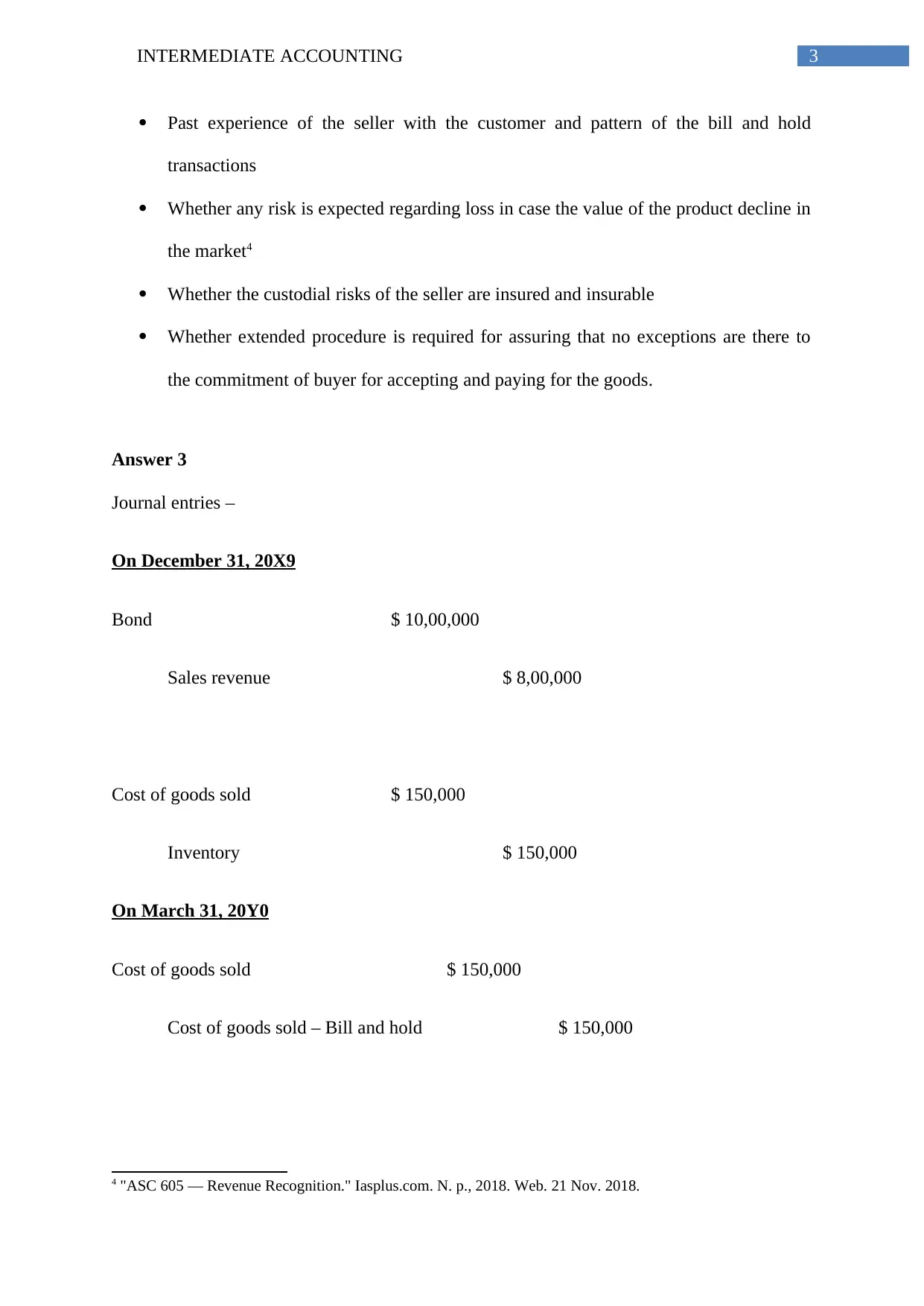
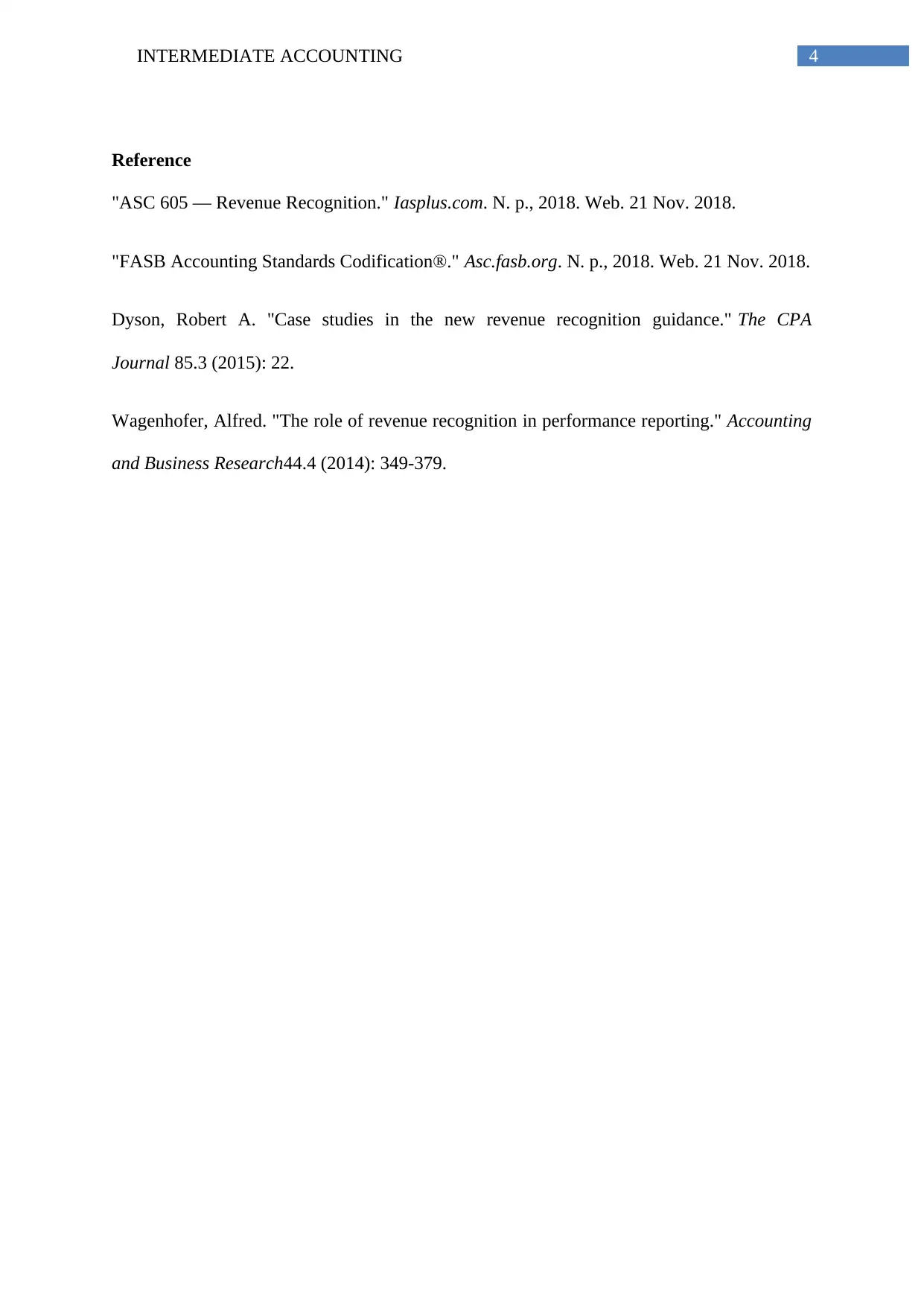






![[object Object]](/_next/static/media/star-bottom.7253800d.svg)